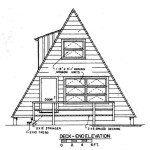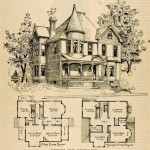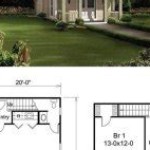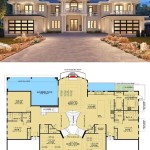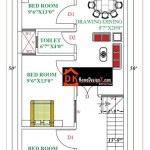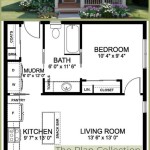A house plan builder is a tool or service that enables individuals to create and visualize designs for their future homes. It typically involves the use of software or online platforms that provide a range of features to help users conceptualize and customize their dream home.
For instance, suppose you have a plot of land and envision a quaint cottage with a cozy fireplace and an open floor plan. A house plan builder can assist you in translating your ideas into a concrete design, allowing you to experiment with different layouts, room dimensions, and architectural styles.
As we delve deeper into this article, we will explore the various types of house plan builders, their advantages and limitations, and how they can empower homeowners to actively participate in the design process of their dream homes.
House plan builders offer several key advantages, making them valuable tools for homeowners and professionals alike:
- User-friendly interface
- Extensive template library
- Customizable design options
- 3D visualization and walkthroughs
- Collaboration and sharing features
- Cost estimation capabilities
- Energy efficiency analysis
- Code compliance verification
- Professional support
- Seamless integration with other software
By leveraging these capabilities, house plan builders empower homeowners to actively participate in the design process, communicate their ideas effectively with builders and architects, and make informed decisions about their future homes.
User-friendly interface
One of the primary advantages of house plan builders is their user-friendly interface, designed to make the home design process accessible and enjoyable for users of all skill levels.
These platforms typically feature an intuitive drag-and-drop interface, allowing users to easily add, remove, and arrange rooms, walls, and other architectural elements. The user interface is often complemented by tooltips, tutorials, and help menus, providing guidance and support throughout the design process.
Furthermore, many house plan builders offer pre-designed templates and sample plans, which can serve as a starting point for users who may not have a clear idea of their desired home layout. These templates can be customized to suit individual needs and preferences, enabling users to quickly create a personalized design.
Additionally, some house plan builders incorporate 3D visualization and virtual walkthrough features, allowing users to experience their designs in a realistic and immersive manner. This helps them identify potential issues or areas for improvement, ensuring that the final design meets their expectations and requirements.
Overall, the user-friendly interface of house plan builders empowers homeowners to actively participate in the design process, fostering creativity and collaboration, while minimizing the need for technical expertise or prior design experience.
Extensive template library
House plan builders often provide an extensive library of pre-designed templates and sample plans, which serve as a valuable resource for users who may not have a clear idea of their desired home layout or lack the time to create a design from scratch.
- Diverse architectural styles: Template libraries typically offer a wide range of architectural styles to choose from, including traditional, contemporary, modern, farmhouse, and many others. This diversity ensures that users can find a template that aligns with their aesthetic preferences and functional requirements.
- Pre-defined room layouts: Templates come with pre-defined room layouts that take into account factors such as space efficiency, traffic flow, and natural lighting. Users can select a template that best suits their lifestyle and needs, and then customize it to incorporate their unique preferences.
- Scalable designs: Many templates are designed to be scalable, allowing users to easily adjust the overall dimensions of the house plan to fit their specific lot size or budget. This flexibility ensures that users can find a template that aligns with their land constraints and financial situation.
- Customizable features: While templates provide a solid foundation for the design process, they are also highly customizable. Users can modify room sizes, add or remove walls, change the placement of windows and doors, and incorporate their own unique design elements to create a truly personalized home.
The extensive template library offered by house plan builders empowers homeowners to quickly and easily create a design that meets their specific needs and preferences, while also providing a strong starting point for further customization and refinement.
Customizable design options
House plan builders offer a wide range of customizable design options, empowering homeowners to tailor their home designs to their unique needs, preferences, and lifestyles.
Room layouts and dimensions
Users can easily modify the size, shape, and layout of rooms to create a floor plan that optimizes space utilization and flow. Walls can be added, removed, or repositioned to accommodate specific furniture arrangements, traffic patterns, and natural lighting conditions.
Architectural elements
House plan builders provide a comprehensive library of architectural elements that can be incorporated into the design, such as windows, doors, fireplaces, built-in cabinetry, and moldings. Users can customize the style, size, and placement of these elements to create a home that reflects their personal taste and functional requirements.
Exterior design
The exterior design of the home can be tailored to complement the surrounding environment and architectural style. Users can choose from a variety of roofing materials, siding options, window styles, and exterior finishes to create a cohesive and visually appealing facade.
Interior finishes
Interior finishes, such as flooring, wall coverings, and ceiling treatments, can be customized to create a unique and inviting living space. House plan builders often provide a library of materials and finishes to choose from, allowing users to select the ones that best align with their style and budget.
The extensive customizable design options offered by house plan builders empower homeowners to create a home that truly reflects their individuality and meets their specific needs and preferences. By providing a flexible and user-friendly platform, house plan builders enable homeowners to actively participate in the design process and bring their dream homes to life.
3D visualization and walkthroughs
Immersive home design experience
3D visualization and walkthrough features in house plan builders provide an immersive and interactive experience, allowing users to visualize their home designs in a realistic and spatial manner. These features enable users to navigate through their designs as if they were actually walking through the house, gaining a deeper understanding of the layout, flow, and spatial relationships.
Virtual exploration
3D walkthroughs allow users to explore their home designs from different perspectives and vantage points. They can move freely through the virtual space, examining the layout, dimensions, and placement of rooms, windows, and other architectural elements. This virtual exploration helps users identify potential issues or areas for improvement, ensuring that the final design meets their expectations and requirements.
Design validation
3D visualization and walkthroughs serve as valuable tools for design validation. By experiencing the design in a realistic 3D environment, users can identify and address potential problems or inconsistencies that may not be apparent from 2D plans alone. This helps prevent costly mistakes and ensures that the design is accurate and buildable before construction begins.
Collaboration and communication
3D visualization and walkthroughs facilitate effective collaboration and communication among homeowners, architects, and builders. By sharing 3D models and walkthroughs, stakeholders can visualize the design intent, discuss ideas, and make informed decisions. This collaborative approach helps streamline the design process, reduce miscommunication, and ensure that everyone is on the same page.
Collaboration and sharing features
House plan builders offer robust collaboration and sharing features that facilitate effective communication and teamwork among homeowners, architects, builders, and other stakeholders involved in the home design process.
- Real-time collaboration: Multiple users can simultaneously access and work on the same house plan, making changes and updates in real time. This collaborative environment enables seamless communication and efficient decision-making, ensuring that everyone is on the same page throughout the design process.
- Cloud-based storage: House plan builders typically store designs in the cloud, providing secure and centralized access to all authorized users. This eliminates the need for multiple local copies and ensures that everyone has access to the most up-to-date version of the plan.
- Shareable links: Users can easily share their house plans with others by generating shareable links. These links can be shared via email, messaging platforms, or social media, allowing stakeholders to review and provide feedback on the design.
- Export and import options: House plan builders allow users to export their designs in various file formats, such as PDF, DWG, and XML. This enables users to share their plans with professionals who may use different software or platforms, ensuring seamless collaboration and data exchange.
The collaboration and sharing features in house plan builders streamline the design process, improve communication among stakeholders, and ensure that everyone involved has access to the most current and accurate information. By fostering collaboration and transparency, house plan builders empower homeowners to actively participate in the design of their dream homes and make informed decisions alongside the professionals involved.
Cost estimation capabilities
House plan builders often incorporate cost estimation features that provide homeowners with valuable insights into the potential construction costs of their designs. These features leverage industry-standard data and algorithms to generate accurate and reliable cost estimates, empowering homeowners to make informed decisions and plan their budgets accordingly.
- Construction cost calculations: House plan builders can estimate the overall construction costs based on various factors, including the size and complexity of the design, the materials used, and the local construction rates. This information helps homeowners understand the financial implications of their design choices and make adjustments as needed to align with their budget.
- Material quantity breakdowns: Cost estimation features provide detailed breakdowns of the quantities of materials required for construction, such as lumber, concrete, roofing, and fixtures. This information allows homeowners to compare material costs from different suppliers and negotiate better deals, potentially saving money on the overall project.
- Labor cost estimates: House plan builders can also estimate the labor costs associated with constructing the home, taking into account factors such as the size of the project, the complexity of the design, and the local labor rates. This information helps homeowners plan for the labor expenses and allocate funds accordingly.
- Customization and flexibility: Cost estimation features often allow homeowners to adjust various parameters and assumptions to generate customized cost estimates. For example, they can modify the material selections, labor rates, or construction methods to see how these changes impact the overall cost of the project.
The cost estimation capabilities of house plan builders empower homeowners to make informed decisions throughout the design process. By providing accurate and detailed cost estimates, these features help homeowners stay within their budget, avoid cost overruns, and plan for the financial aspects of their home construction project.
Energy efficiency analysis
House plan builders often incorporate energy efficiency analysis features that evaluate the energy performance of a home design based on various factors, such as the building envelope, heating and cooling systems, and lighting fixtures. These features provide homeowners with valuable insights into the potential energy consumption and operating costs of their future homes, empowering them to make informed decisions and design energy-efficient living spaces.
Energy efficiency analysis features typically leverage industry-standard simulation engines and algorithms to calculate a home’s energy performance. They consider factors such as the thermal resistance of walls and roofs, window glazing properties, air infiltration rates, and the efficiency of heating, cooling, and ventilation systems. By analyzing these factors, the software can estimate the amount of energy required to maintain a comfortable indoor environment throughout the year.
The results of the energy efficiency analysis are typically presented in a detailed report that outlines the home’s energy consumption profile, potential energy savings, and recommendations for improvement. This information can help homeowners identify areas where they can enhance the energy efficiency of their design, such as by upgrading insulation levels, installing high-performance windows, or incorporating renewable energy sources.
By providing homeowners with comprehensive energy efficiency analysis, house plan builders empower them to design homes that are not only comfortable and aesthetically pleasing but also environmentally friendly and cost-effective to operate. This information can guide homeowners toward sustainable building practices, reduce their carbon footprint, and contribute to a greener future.
Code compliance verification
Code compliance verification is a crucial feature offered by some house plan builders that helps homeowners ensure that their designs adhere to local building codes and regulations. Building codes are established to ensure the safety, structural integrity, and energy efficiency of buildings, and it is essential for homeowners to comply with these codes to obtain building permits and construct their homes legally.
House plan builders with code compliance verification features typically employ sophisticated software tools that automatically check the design against a comprehensive database of building codes. These tools analyze factors such as structural elements, fire safety measures, accessibility requirements, and energy efficiency standards to identify any potential violations or areas of non-compliance.
The code compliance verification process typically involves the following steps:
- Code selection: Users select the relevant building codes and standards that apply to their project based on their location and the type of structure they are designing.
- Automated analysis: The house plan builder software automatically checks the design against the selected codes, identifying any violations or areas of non-compliance.
- Detailed reporting: The software generates a detailed report that outlines the results of the analysis, highlighting any code violations and providing recommendations for corrections.
By utilizing house plan builders with code compliance verification features, homeowners can proactively identify and address potential code violations early in the design process, reducing the risk of costly delays or rework during construction. This feature empowers homeowners to design homes that are not only aesthetically pleasing and functional but also compliant with local building codes, ensuring the safety and structural integrity of their future homes.
Professional support
House plan builders often offer professional support services to assist homeowners throughout the design process and beyond. These services may include consultations with architects, engineers, and other experts, providing valuable guidance and expertise to ensure that the home design meets the specific needs and requirements of the homeowner.
Architectural consultations
Homeowners can schedule consultations with experienced architects to discuss their design ideas, explore different architectural styles, and refine their floor plans. Architects can provide professional insights, suggest design solutions, and help homeowners create a home that aligns with their vision and lifestyle.
Engineering consultations
For more complex designs or homes located in areas with specific building requirements, homeowners can consult with engineers to ensure the structural integrity and safety of their plans. Engineers can analyze the design, assess potential risks, and recommend appropriate solutions to meet building codes and standards.
Custom design services
Professional designers can assist homeowners who desire a truly unique and personalized home. They work closely with homeowners to understand their specific needs, preferences, and lifestyle to create custom house plans that reflect their individuality and aspirations.
Professional support services offered by house plan builders empower homeowners to make informed decisions throughout the design process, ensuring that their dream homes are not only aesthetically pleasing but also structurally sound, code-compliant, and tailored to their specific requirements.
Seamless integration with other software
House plan builders often integrate seamlessly with other software applications that are commonly used in the design and construction industry. This integration allows homeowners and professionals to streamline their workflow, enhance collaboration, and access a wider range of tools and resources.
- CAD software: House plan builders can seamlessly exchange data with popular CAD (Computer-Aided Design) software, enabling users to import and export designs in various file formats. This interoperability allows for easy collaboration between architects, engineers, and contractors, ensuring that the design intent is accurately communicated throughout the project.
- 3D modeling software: Integration with 3D modeling software enables users to create realistic 3D models of their home designs. These models provide a comprehensive visualization of the home, allowing homeowners to explore different design options, materials, and finishes in a virtual environment. The 3D models can also be used for energy efficiency analysis, walkthroughs, and presentations.
- Project management software: House plan builders can integrate with project management software, providing homeowners with a central platform to track the progress of their home construction project. This integration allows users to manage tasks, schedules, budgets, and communication, ensuring that all aspects of the project are coordinated effectively.
- Building information modeling (BIM) software: Integration with BIM software enables users to create a comprehensive digital model of the home design that contains all relevant information, including architectural plans, structural elements, mechanical systems, and materials. This model can be used for design coordination, quantity takeoff, cost estimation, and facility management, improving the efficiency and accuracy of the construction process.
The seamless integration with other software applications empowers homeowners and professionals to leverage a wide range of tools and resources, enhance collaboration, and streamline the design and construction process, ultimately leading to more efficient and successful home building projects.






Related Posts

